
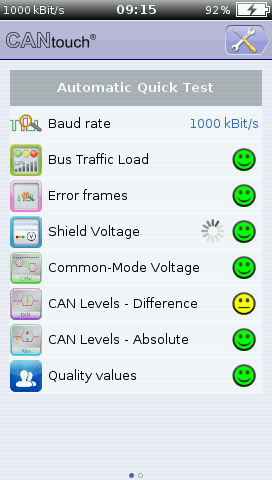
Automatic quick test
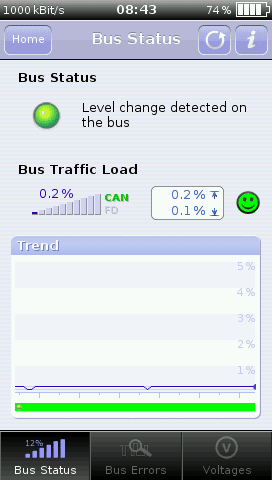
Bus status

Bus errors
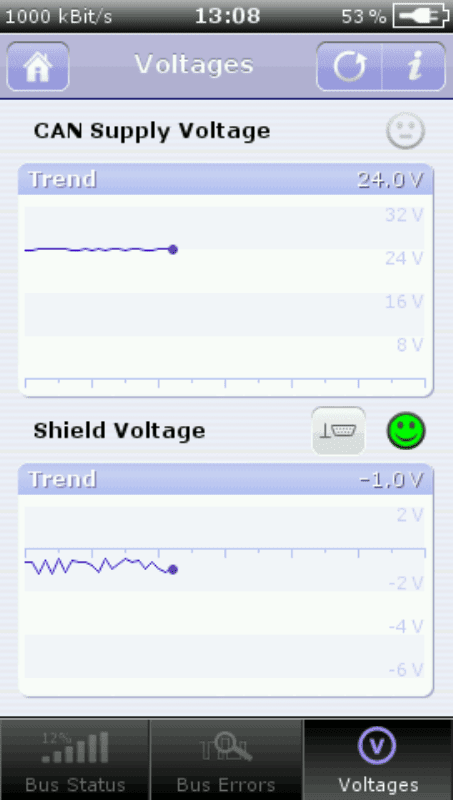
Bus voltages
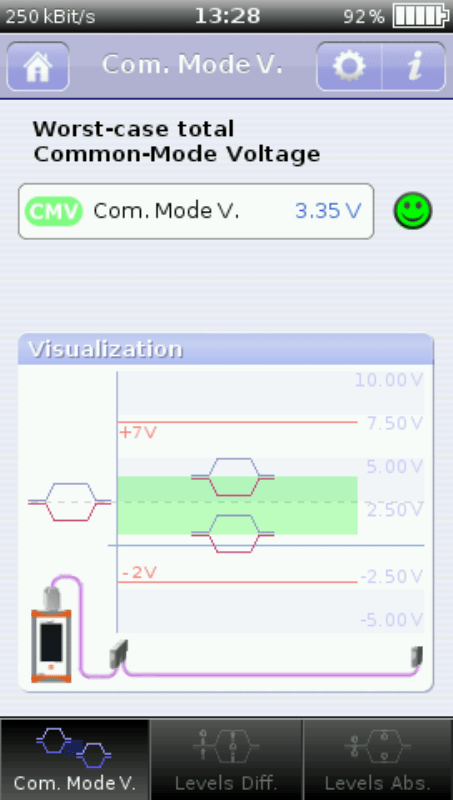
Ground shift

CAN levels Difference
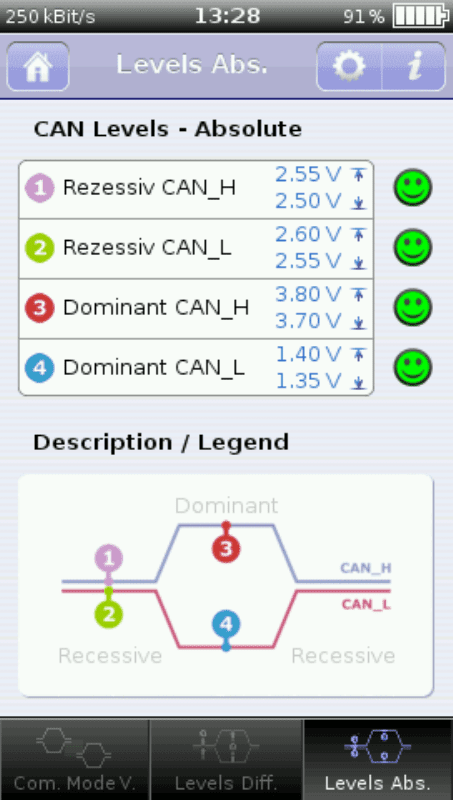
CAN levels absolute
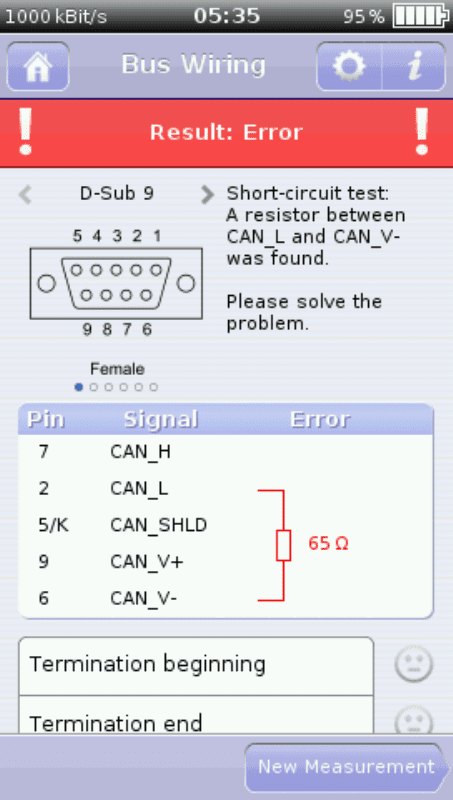
Bus wiring test
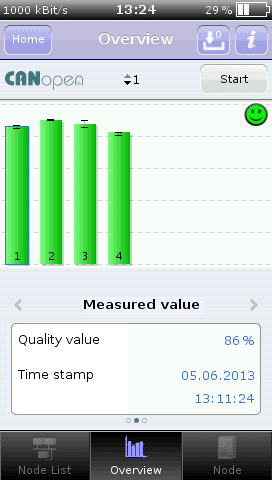
Measurement of all nodes

Measurement of single node
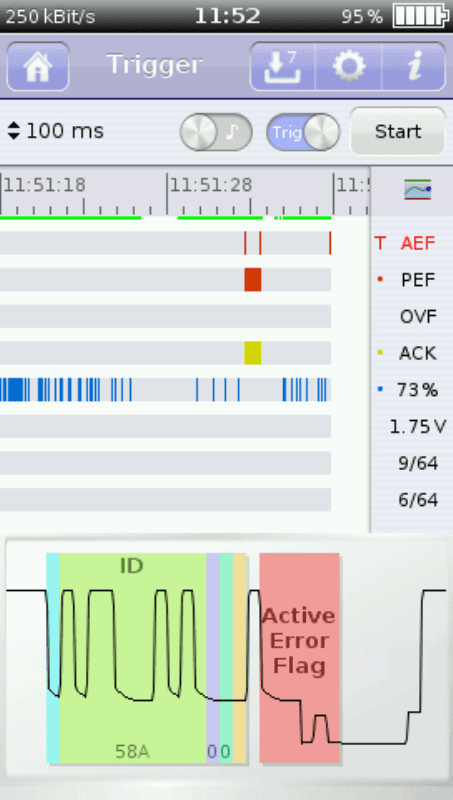
Online trigger

Protocol monitor
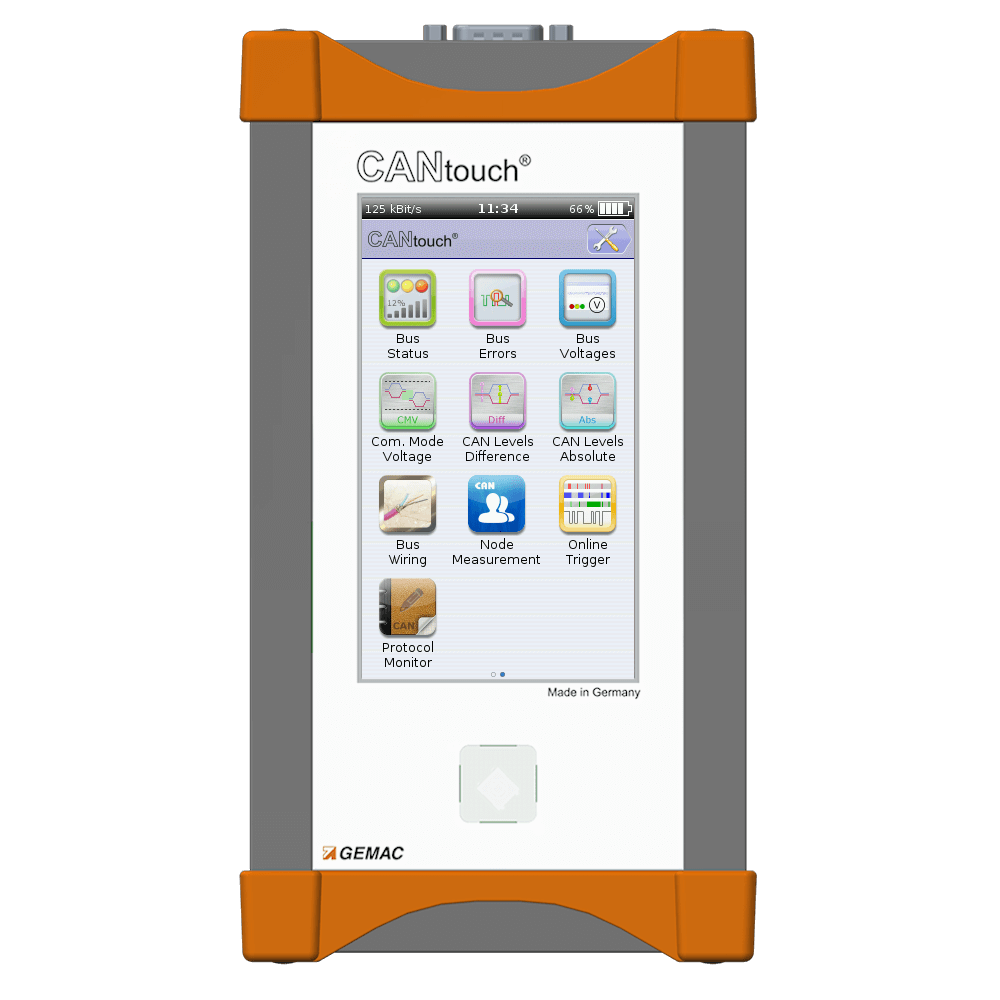


Ensure the functionality of your new bus system.
Bring your system in an error condition back to live quickly.
Finish off pending service work efficient and exact.
CAN connector
Power-Button
External Ground Port
Battery state of charge display
USB-Port
Port for Charger and external Powersupply
Home-Button
Touchdisplay
Statusdisplay
Baud rate, Time , Battery
Settings menu
aluminium body
rubber lining
rubber lining
a view into the device

Product |
Description |
GEMAC order number /shoplink |
|
 |
CANtouch – Complete Set | Complete set consisting of: • CANtouch – basic set (PR-22580 – 00) • Adapter Set (PR-22580 – 10) • Service Case (PR-22580 – 50) |
PR-22580 – 81 |
 |
CANtouch – Basic Set | CANtouch incl. power supply (type: SAW-14.0 – 2500), power supply coard Euro, USB cable, 2 user manuals (German, Englisch) |
PR-22580 – 00 |
 |
Adapter Set | CAN connecting cable 0.3 m CAN connecting cable 1.5 m Adapter 2x 9‑pin D‑Sub /1x M12 full metall M12 T‑peace full metall Shorting plug M12 Shorting plug 9‑pin D‑Sub Terminating resistor M12 Terminating resistor 9‑pin D‑Sub 4 mm safety testing wire 3 m length 4 mm crocodile clip |
PR-22580 – 10 |
 |
Service Case | Robust case with foam inlets fitting for CANtouch – basic set and adapter set |
PR-22580 – 50 |
Licences for optional software apps |
|||
| License „Node Measurement“ | CAN | License key for node related physical layer measurement in bus system CAN |
SW-22580 – 00 |
| CANopen | License key for node related physical layer measurement in bus system CANopen |
SW-22580 – 01 | |
| DeviceNet | License key for node related physical layer measurement in bus system DeviceNet |
SW-22580 – 02 | |
| SAE J1939 | License key for node related physical layer measurement in bus system SAE J1939 |
SW-22580 – 03 | |
| License „Bus Wiring“ | License key for bus wiring measurements | SW-22580 – 10 | |
| License „Online Trigger“ | License key for Online Trigger monitoring app | SW-22580 ‑15 | |
| License „Protocol monitor“ | License key for protocol monitor CAN (transmit/receive) | SW-22580 – 11 | |
Maintenance |
|||
| Battery changing service | Replacement of the integrated battery | PR-22580 – 90 contact Support | |
| Calibration service | Calibration of CAN input circuit | PR-22580 – 92 contact Support | |
For a detailed table with the single measurements of the physical layer diagnosis tools, please have a look at this page.
Device/Program |
Choose your software version |
User manual |
Datasheet |
||||
|
CANtouch usermanual (6443 downloads ) | CANtouch datasheet (6052 downloads ) | |||||
| Supplier query batteries | Lieferantenabfrage Batterien (6440 downloads ) | ||||||
| UK declaration of conformity according to ISO/IEC 17050 – 1 | PR-22580 – 00-CE (3723 downloads ) | ||||||
| EU declaration of conformity according to ISO/IEC 17050 – 1 | PR-22580 – 00-CE (3723 downloads ) | ||||||